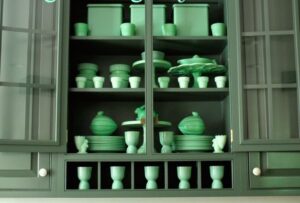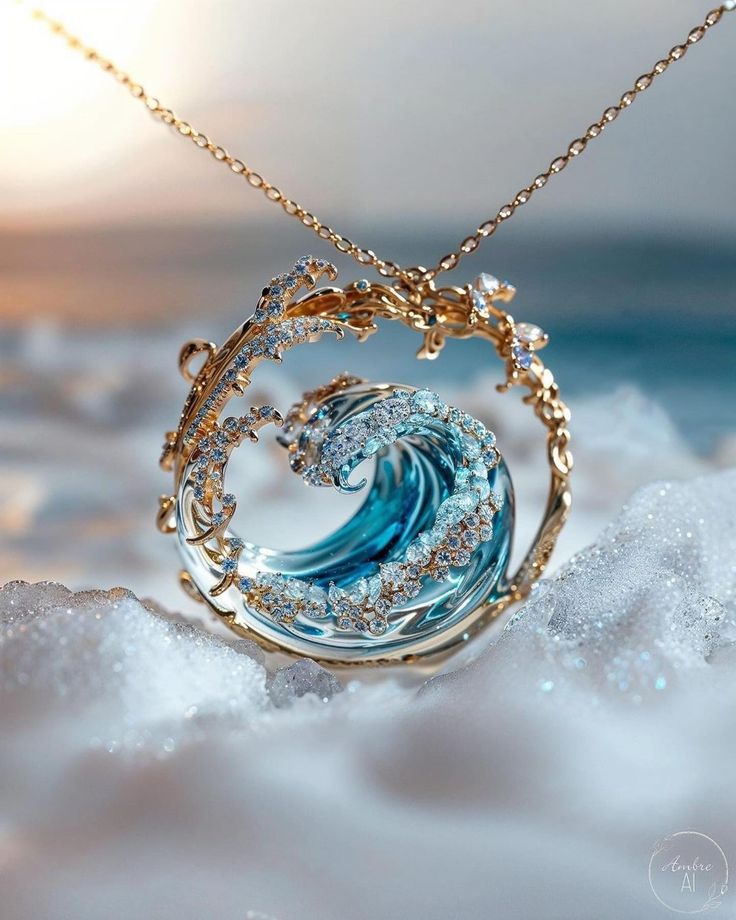Jade, a naturally occurring stone, has always bedazzled the world with its vivid colors and beautiful hues. Many ancient civilizations treasured it, as they believed it to have healing powers and the ability to ward off evil spirits. Even today, in some cultures, it is not a piece of jewelry or artwork but something that can calm and soothe down the disturbed energies. So let’s explore this healing gem and find out its role in defining the lifestyle.
The History and Origin of Jade
Considering Jade as just a gemstone would be unfair to its historical significance. Asian countries ( China, Korea, Japan etc.) have traditions and beliefs that consider Jade as a symbol of fortune, health, longevity and fertility. The history of Jade is more than 7,000 years old. The 16th-century Spanish believed that this stone, jade could cure kidney diseases; hence, it was called the Piedra de Ijada in Spanish, which means “stone of flank pain”—a cure for kidney ailments.
Cultural and Traditional Values
Jade is revered differently in different cultures:
China: Dating back to about 5,000 years, Jade is considered a symbol of virtue, immortality and power. They called it ‘Yu’, the royal gem. In the Neolithic period, the value of jade was even higher than that of gold. Confucius believed that jade was a symbol of intelligence and loyalty. Chinese consider, gifting jewelry made of jade, such as pendants, bangles, and rings, to show their love, protection, and prosperity. Ancient Chinese royalty especially got Jade burial suits crafted for them to wear as their last attire to ensure immortality.
Mesoamerica: Other parts of the earth were also not spared from the fascination of jade. For the Olmecs, Mayans, and Aztecs, jade was a symbol of life and fertility. They used to put Jade in the mouth of the deceased symbolizing rebirth.
New Zealand: Māori used jade (pounamu) to make tools, weapons, and ornaments. Its importance for them was linked to their ancestors and spirituality.
Enchanting Folklore Around Jade
Just like every legend has a plethora of stories following it, some glorifying, some justifying, and others manifesting their larger-than-life qualities and contributions to society. Jade too has numerous myths and stories about it. In Chinese folklore, jade was believed to be the crystallized essence of dragon’s eggs that bestowed courage and wisdom on the wearer. It also assured protection against negative energies. Even today, the breaking or cracking of the stone indicates that jade absorbed the harmful forces to protect the wearer.
You don’t choose Jade, the Jade chooses you.
Many a time, without any reason, people find themselves drawn towards the hues of Jade. It somehow hints towards a supernatural belief related to the stone. (which says that every stone has its own serving spirit and is responsible for finding the master for the stone) However, there are no traditional ‘tikanga‘ — teachings or references stating that it is because of the presiding spirit of the stone yet believed to be a pick-me-up call from the stone.
The Beauty of Jade: Types and Colors
Type: Jade is found in two main types: jadeite and nephrite.
Nephrite is a little softer than jadeite, which is why it is used more in making artifacts and carvings. One is awestruck to see the various types of utensils made from this.
Jadeite is a rare type, with its value quite higher than its other variety. The hardness, durability, and vivid colors of jadeite have captivated the world for years.





Colors:
Green Jade: Also called the Imperial Green Jade, renowned around the world for its most iconic beauty, high value and the bewitching “imperial green” shade.

White Jade: The “mutton fat jade,” its creamy, translucent variety, symbolizes purity and peace.

Lavender Jade: A rarer variety with a dreamy purple shade, prized for its unique charm. Best suited for rings, earpieces, and pendants.

Yellow and Brown Jade: Representing grounding and stability.

Black Jade: Mysterious and protective, often associated with strength and power.

Artifacts and Jewelry
Jewelry
Jade stone is carved in both jewelry and decorative items. Its versatility is another amazing quality other than its spiritual and balancing powers. Jewelry, e.g., a necklace, bracelets, rings, and earrings, has always been a symbol of class and grace.



Generally, people seeking protection and luck, wear it on their left hand whereas those who want to enhance their focus and energy flow adorn it on their right hand. Women are seen wearing jade bracelets on their left wrist and men on their right.
The Heirloom
In Asian culture, jade is not merely a gemstone or ornament. It is an auspicious thread that weaves the fabric of the family history. The jade pieces of the family are considered as treasure. On special occasions like weddings or birthdays, they are passed down from the elders of the family to the younger generation as handing over the family responsibilities, values and traditions, nurturing a sense of belonging by connecting the past to the present.
Every jade heirloom carries the essence and a connection to ancestors. Adorning a jade heirloom be it any jewelry piece, bangle or bracelet is a daily reminder and assurance of the wisdom, strength, blessing, and love of those who came before.
Artifacts


The Jade stone is often carved into intricate artifacts with traditional and cultural symbols, such as dragons, Buddha statues, and floral motifs.
Sculptures: Jade has been carved into religious icons, mythical creatures, and ceremonial objects.
Household Items: Trinket boxes, vases, and even chopsticks made of jade add a touch of luxury.
Healing Tools: Jade rollers and gua sha tools are popular in skincare for their cooling and soothing properties.
Tips for Buying Genuine Jade
If you want to purchase authentic jade, consider these tips:
Seek Certification: Always buy from a reputed gemological institute and request a certificate of authenticity without fail.
Test Hardness: Observe the hardness. Jadeite is extremely hard and cannot be scratched easily. So if your jade sheds powder on scratching, it’s not genuine.
Feel the Weight: Genuine jade feels heavier than fake counterparts made of glass or resin.
Check Temperature: Real jade feels cool to the touch and warms up slowly when held.
Examine Under Light: Jade of high quality is translucent, with minimal impurities or inclusions.
Recognizing the Best Quality
The finest jade exhibits:
Color: Rich, even hues without blotches or uneven patterns.
Transparency: The more translucent the stone, the higher its value.
Texture: Smooth and consistent, free from cracks or flaws.
Conclusion: The Timeless Allure of Jade
Jade stone, along with its allure, authenticity, and storied history, continues to enchant collectors and enthusiasts worldwide.
From royalties to humble households, Jade continues to embrace appreciation and love. Indeed, jade is not just a stone—it is a timeless treasure.
Image: Pinterest


Very beautiful article.
Thanks a lot. Plz keep reading and sharing.
Thanks for reading and appreciating our work.